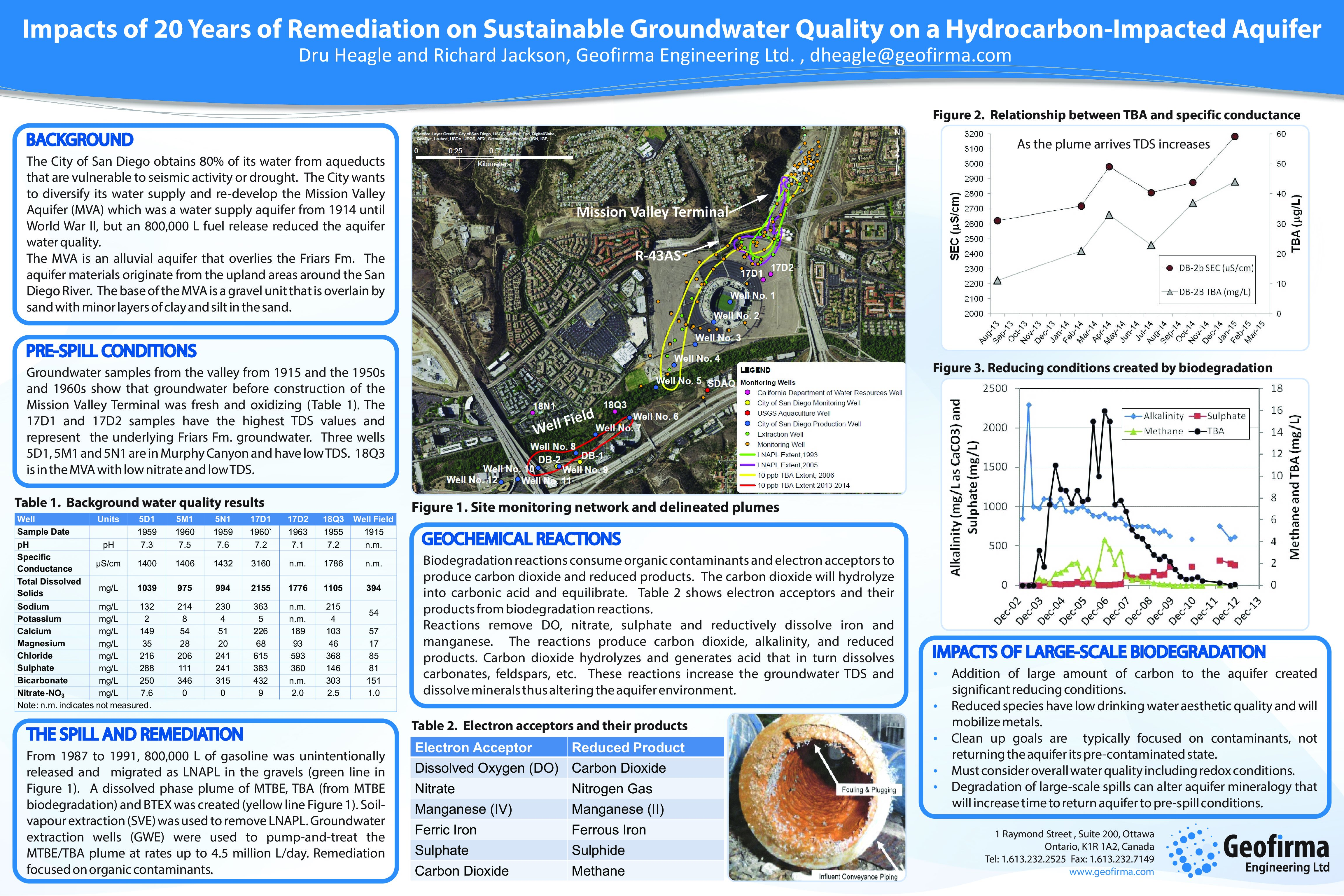Assessment & Monitoring of Aquifer Remediation
San Diego, California
Richard Jackson is the contaminant hydrogeologist for the City of San Diego for the remediation of an 800,000 L gasoline release from a tank farm up-gradient from the Mission Valley Aquifer. The gasoline LNAPL dissolved into the groundwater and produced a 2 km-long dissolved-phase plume of methyl tertiary butyl ether (MTBE), a gasoline additive, which has largely degraded into tert-butyl alcohol (TBA), which is carcinogenic. It is the City of San Diego’s goal to redevelop the MVA into a groundwater resource to diversify the City’s water supply once remediation of the gasoline release has been completed. Remediation strategies have focused on soil vapour extraction (SVE), groundwater extraction (GWE) and monitored natural attenuation (MNA). The reactants of the biodegradation reactions involve MTBE and TBA and electron acceptors (e.g. dissolved oxygen) and result in reduced reaction products. The reduced reaction products include iron and manganese compounds, which lower the water aesthetic quality and may be precipitated and stored in the aquifer material. These precipitated minerals must be dissolved and removed to truly restore the aquifer to background water quality conditions. Geofirma’s role is to protect the City’s interests by reviewing proposals for site cleanup by the PRP, analyzing data, conducting simulations and proposing approaches for completion of cleanup.
Geofirma staff presented the below poster describing unintended impacts of large scale biodegradation at the RPIC Workshop in Montreal (April 2016).

© Copyright – Geofirma Engineering Ltd. | 200-1 Raymond St., Ottawa, ON K1R 1A2
